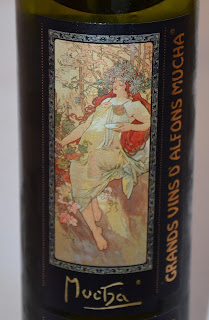Zweigelt, or in Czech called the full German name 'Zweigeltrebe', is a dark-berried grape variety which was bred in Austria in 1922 by Dr. Zweigelt. Nowadays it is the most planted red grape variety in Austria and it became also popular over the border in the Czech Republic, Slovakia and Hungary. It is a cross of Blaufränkisch and St. Laurent, the yields are very generous, therefore it is important to reduce the yields in order to produce high quality wines with full body but yet smooth. The palate of Zweigelt is a great combination of the two varieties, it has the elegancy of St. Laurent but at the same time it is brisk with distinct tannins of Blaufränkisch.
Zweigelt Rosé 2015
semi-sweet
Kabinett
10,5% alc.
residual sugar: 23,1 g/l
acids: 7,2 g/l
Moravia region, Slovacko subregion, Lanzhot - vineyard Strazove hony
Although rosé wines create a marginal part of the production in the Czech Republic, their popularity has been growing in recent years. This Zweigelt Rosé comes from the winery Skoupil from Velke Bilovice. Beautiful rosé colored wine with flaming glints, the aroma is full of forest fruits and fine honey notes. The palate is elegant and fruity with major strawberry and blackberry notes, afterwards it reveals also other red berries, cherries and honey notes. A distinctive acidity makes the wine brisk and refreshing despite high residual sugar. The aftertaste is softend with yoghurt and cream notes, typical for Moravian rosé wines. The wine has won Silver Medal at San Francisco International Wine Competition 2016 and Festwine 2016.
The low percentage of alcohol and sweet fruity taste determine this rosé to appeal especially to women. Furthermore the wine features an interesting label – a dark pink label with carved patterns inspired by pottery from prehistoric times which was found at archeological sites in Velke Bilovice where the winery Skoupil is located. This simple idea connects a modern design with the tradition and history of winemaking in this area.
From this beautiful collection "Pottery" we offer also Pálava 2015.
From this beautiful collection "Pottery" we offer also Pálava 2015.
Follow Check Czech Wine to get more reviews!
Follow our Facebook: https://www.facebook.com/checkczechwine
View more photos on our Instagram: https://www.instagram.com/checkczechwine/
Visit our website to see wines we offer: http://www.winehills.eu





